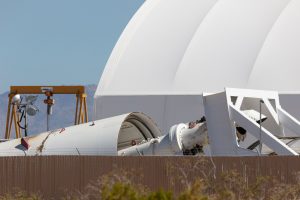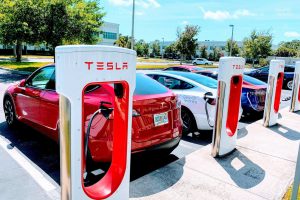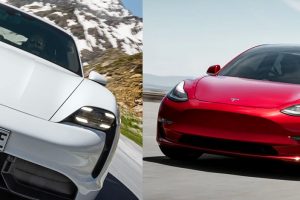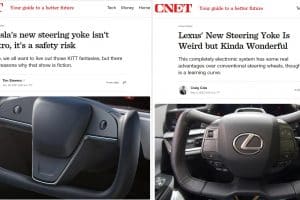Elon Musk, CEO of Tesla, may have strong differences about the political handling of the COVID-19 pandemic, but his efforts to help solve the problem strike a more optimistic tone, namely associated with the vaccine’s technical advances.
Musk gave his views on using RNA for immunization therapies in a recent Twitter debate about the increase in regional incidents.
“In principle, I think synthetic RNA (and DNA) has amazing potential,” he replied. “This basically makes the solution to many diseases a software problem.” Musk then drew attention to the current work Tesla is doing in Germany via Tesla Grohmann Automation GmbH. “Tesla is building RNA micro-factories for CureVac & possibly others as a side project.”
CureVac AG is a German biotechnology company established in 2000, with the primary objective of using proteins created with stabilized messenger RNA (mRNA) in disease therapy. As described on their official website, the company has “…develop[ed] an extensive in-house nucleotide sequence library that allows us to optimally assemble the various pieces of the mRNA puzzle for the desired therapeutic use…Each CureVac product can be thought of as a tailored molecular creation.” The protein-centric nature of these products may enable the development of a wide variety of therapies, including cancer immunotherapy, antibody production, treatments for rare diseases, and prophylactic vaccines.
The vaccines used by CureVac use a dose of synthetic mRNA coded for disease-specific proteins or antigens that induce the immune system to react and produce antibodies. Musk’s claim about diseases being an issue with software seems to partially apply to this form of technology. The manufacturing side of this advanced mRNA appears to be where they formalize their relationship with Tesla. Specifically, the two companies have developed a bioreactor (referred to by Musk as a ‘RNA microfactory’) that combines automation technology from Tesla Grohmann with mRNA coding and printing tailored to CureVac.
A February 2019 press release by CureVac refers to the bioreactor as The RNA PrinterTM describes it as “…a transportable, down-scaled, automated messenger RNA (mRNA) printing facility…that can target known pathogens (including Lassa Fever, Yellow Fever, and Rabies) and prepare for rapid response to new and previously unknown pathogens (referred to by WHO as “Disease X”).” Several partnerships and grants have been accumulated by CureVac to further its development of the machine’s capabilities, and the race for a COVID-19 vaccine has brought even more attention and support to the technology.
Although this pandemic has now provided a spotlight on the partnership between Tesla and CureVac, a joint patent application was originally filed for the bioprinter in 2018. The invention was published in January of this year and is descriptively titled “Bioreactor for RNA in vitro Transcription” and is assigned International Patent Publication No. WO-220/2598. The application’s background section provides a bit more insight into the technology, its potential and why automation in Tesla-style really makes a difference in what’s possible:
“A critical step in RNA production is the generation of a suitable DNA template, which at industrial scale is a major cost factor…Manufacturing of RNA requires a large degree of manual handling in a GMP-regulated laboratory executed by well-trained technical staff. In consequence, current established manufacturing processes are time consuming, cost intensive, and require a lot of laboratory space and laboratory equipment.”

Essentially, automating much of the manufacturing process would increase efficiency and reduce human errors, just as is the case with automated manufacturing of Tesla’s vehicle. However, unlike large-scale automobile installations, this bioprinter will be a lot smaller. Portability comes into play with staffing needs reduced and the equipment needs reduced to a single machine.
“…an acceleration of RNA manufacturing would be highly advantageous and of major importance for public health, especially in the context of pandemic scenarios. Further advantageous in that context would be the production of the RNA therapeutics in the region of the outbreak which would, however, require a portable RNA production apparatus.”
It is not clear exactly which parts of the invention were the unique contribution of Tesla apart from the indication of Musk that the machines would be generated by his company.
Overall, as reported in the press release of CureVac, The RNA PrinterTM will be able to produce enough customized mRNA for 100,000+ doses of vaccine within a few weeks and at the site of the outbreak. The same system would be versatile enough for a large number of pathogens to be used. In particular, CureVac was recently cleared of its COVID-19 mRNA vaccine for human trials in phase I.
Musk ‘s interest in biotechnology is well known to those who follow his many projects and businesses, particularly as it relates to human-computer interfaces via Neuralink in terms of artificial intelligence. However, in a world turned upside down by a pandemic this more mainstream philanthropic engagement is certainly very welcome.
Reported by Teslarati.
Want to buy a Tesla Model 3, Model Y, Model S, or Model X? Feel free to use my referral code to get some free Supercharging miles with your purchase: http://ts.la/guanyu3423
You can also get a $100 discount on Tesla Solar with that code. No pressure.





